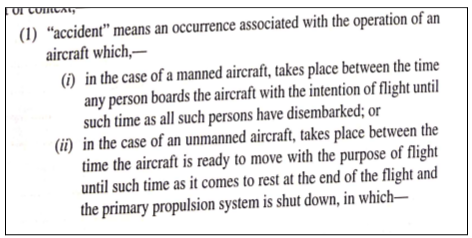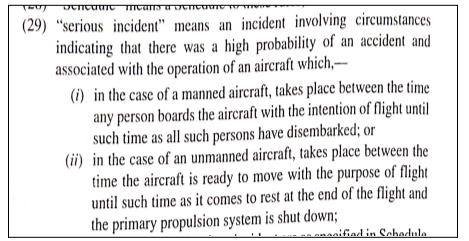Accidents, as classified under aviation regulations, fall under the purview of the Aircraft Accident Investigation Bureau (AAIB) and are investigated as per Rule 11 of the Aircraft (Investigation of Accidents and Incidents) Rules, 2017. According to AAIB, a total of 99 accidents and 116 serious incidents were investigated by the body from July 2012 to March 2024.
Incidents and accidents involving aeroplanes have always been a critical area of focus due to their potential for catastrophic outcomes. These events range from minor incidents to major accidents with severe consequences, highlighting the importance of rigorous safety protocols and preventive measures. The recent tragic helicopter crash that claimed the lives of Iranian President Ebrahim Raisi and his foreign minister, and the turbulence incident in a Singapore Airlines flight have brought renewed attention to aviation safety.
In India too, some prominent leaders lost their lives in tragic aircraft crashes such as Sanjay Gandhi, Madhavrao Scindia, and Y. S. Rajasekhara Reddy. Aircraft accidents can stem from various factors. Mistakes in communication, judgment, or following procedures can have serious consequences. Mechanical failures, such as engine malfunctions or system errors, also contribute significantly. Weather conditions, like heavy fog or storms, pose additional challenges, impacting visibility and flight stability. In some cases, bird strikes, or mid-air collisions further heighten the risk. Pilot fatigue, runway incursions, technical glitches, and fuel management issues are among other common causes.
Globally, the number of accidents and fatalities involving aircrafts has dropped over decades
Between 2005 and 2023, a total of 1,407 accidents occurred globally, as reported by the International Air Transport Association’s (IATA) dashboard. Among these accidents, 237 were fatal, resulting in the loss of more than 8,000 lives. From 2005 to 2009, the annual number of reported accidents exceeded 100, leading to over 760 deaths on average each year. However, these numbers have steadily decreased over time, with an average of 38 accidents per year and approximately 146 lives lost annually between 2019 and 2023. In 2023, IATA noted that the accident rate was 0.80 per million sectors in 2023 (one accident for every 1.26 million flights), an improvement from 1.30 in 2022 (one accident for every 0.77 million flights) and the lowest rate in over a decade.
In India, the data on accidents and severe incidents is provided by the Director General of Civil Aviation (DGCA) and the Aircraft Accident Investigation Bureau (AAIB).
Accident and Incidents are defined in the Aircraft Rules, 2017
According to the Aircraft (Investigation of Accidents and Incidents) Rules, 2017, an accident is an occurrence where severe outcomes, such as fatalities, serious injuries, or significant aircraft damage are involved or if the aircraft becomes missing or completely inaccessible. For instance, the death of General Bipin Rawat, India’s Chief of Defence Staff, in a helicopter crash in 2021 was classified as an accident.

A serious incident is an occurrence that has the potential to result in an accident but does not lead to severe consequences. An example would be a near miss between two aircraft during landing or take-off, where corrective action prevented an accident.

Only accidents and occurrences that tick certain criteria are investigated by AAIB
The mandate for investigating aviation occurrences is clearly delineated based on their classification and circumstances. Accidents, as classified under aviation regulations, fall under the purview of the Aircraft Accident Investigation Bureau (AAIB) and are investigated as per Rule 11 of the Aircraft (Investigation of Accidents and Incidents) Rules, 2017. This mandate ensures that all incidents categorized as Accidents receive thorough scrutiny and analysis by AAIB investigators to determine causes and contributing factors.
Specifically, occurrences involving aircraft with a maximum mass over 2250 Kg or turbojet aeroplanes, categorized as Serious Incidents, are subject to investigation by AAIB under Rule 11. On the other hand, investigations into occurrences involving aircraft with a maximum mass of 2250 Kg or less, categorized as Serious Incidents or Incidents, are conducted by the DGCA under Rule 13.
Furthermore, AAIB retains the authority to conduct investigations into occurrences involving aircraft with a maximum mass of 2250 Kg or less, categorized as Serious Incidents or Incidents, if it deems it necessary for the comprehensive understanding of the circumstances surrounding such occurrences.
Additionally, Rule 12 empowers the Central Government to initiate formal investigations into the circumstances of any accident involving an Indian-registered aircraft if it deems such an investigation expedient. In such instances, a competent individual is appointed to lead the investigation, with AAIB investigators often serving as assessors alongside other experts possessing specialized knowledge relevant to the investigation’s scope and requirements.
99 accidents and 116 serious incidents were investigated by AAIB between July 2012 and March 2024
According to AAIB, a total of 99 accidents and 116 serious incidents were investigated by the body from July 2012 to March 2024. The greatest number of accidents investigated in a year was in 2022 with 12 accidents followed by 10 each in 2023, 2019, and 2015. The number of serious incidents investigated by AAIB rose from 5 in 2015 to 27 in 2019. Since 2019, the number has dropped. As of 11 March 2024, only one accident and one incident were investigated by AAIB in the year 2024. From 2016 until March 2022, 52 people died in these air accidents with the highest of 27 reported in 2020.
On the other hand, the figures reported by the Directorate of Air Safety under DGCA are slightly different for some years. The total number of incidents reported by DGCA stood at 117 between 2013 and 2022 while that by AAIB was 108. The number of accidents was reported as 84 by AAIB during the same period while that by DGCA was 85.
Data is not available by cause or type of incident since 2016
Until 2015, the DGCA reported the data on incidents by cause or type of incident such as engineering, operational, runway excursion, weather, and miscellaneous. This classification is useful for multiple reasons. Firstly, it helps identify specific areas of concern within aviation operations. Moreover, making this data available provides clear information to regulatory bodies, industry stakeholders, and the public, enhancing overall understanding and trust in aviation safety.
However, since 2015, DGCA began publishing information by type of aircraft operator. DGCA also published annual reports on accident summaries where information about the accident, the personnel killed or injured, damage to aircraft, and similar information for each airline company was published. Again, these reports have not been available since 2011.
Most aircrafts involved in accidents are those by non-scheduled operators
Data by type of operator shows that scheduled operators accounted for the majority of the serious incidents. Scheduled operators usually run their aircraft as per a schedule. Meanwhile, non-scheduled operators accounted for a majority of the accidents, even though the number has come down over the years. Accidents by flying training institutes have also increased since 2017 with the highest number reported in 2022 with 7 accidents out of the total 12 reported.
Climate change is resulting in higher air turbulence which can have significant impact on aviation safety
Research indicates that climate change is contributing to an increase in flight turbulence, as the planet warms, atmospheric conditions change, leading to more frequent and severe clear-air turbulence, which occurs without visible weather phenomena like storms or clouds . This has been observed over the past several decades, suggesting that as global temperatures continue to rise, turbulence is likely to become more common, posing challenges for aviation safety and comfort. In such a situation, providing timely and comprehensive data is crucial. Accurate data helps identify patterns and trends in turbulence incidents, informing both airlines and regulators about potential risks so that the technology and policies can also evolve accordingly.
Featured Image: Aircraft Related Accidents


